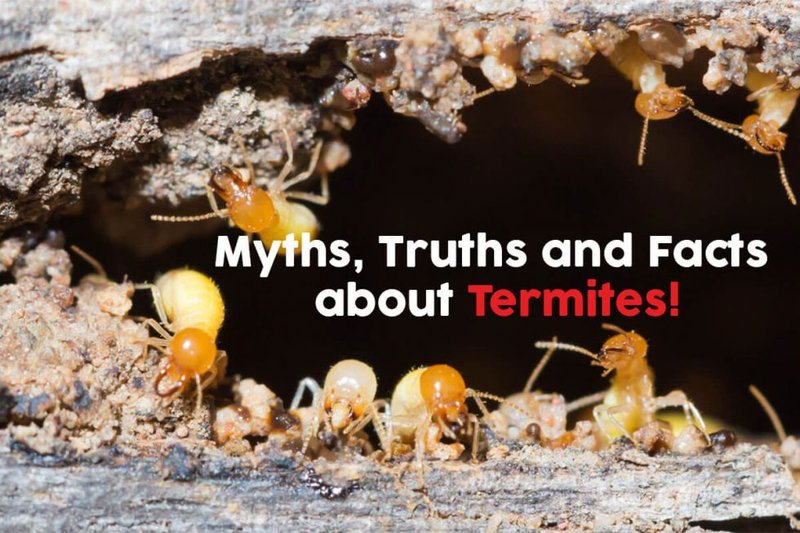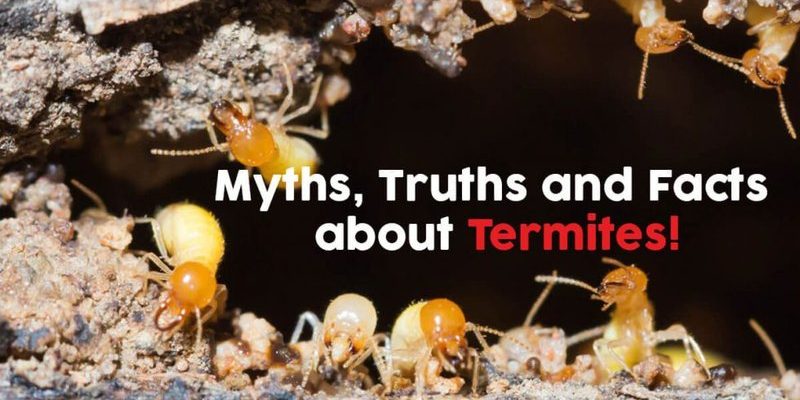
Think of termites as the unsung heroes of nature. They break down tough plant fibers—more commonly known as cellulose—found in wood, leaves, and soil. Their work is crucial for recycling nutrients back into the ecosystem. But when they invade our homes, that’s another story! So, what’s true and what’s just a myth? Let’s grab a cup of coffee and explore these misconceptions about termites together.
Myth 1: All Termites Are Destructive
A major misconception is that all termites are destructive pests. While it’s true that some species, like the subterranean termite, can wreak havoc on your wooden structures, not all termites are created equal. In fact, there are over 2,000 species of termites worldwide, and only a fraction of them are known for damaging homes.
Most termites, particularly the decomposer termites, play an essential role in the ecosystem. They feed on dead trees and plant matter, breaking it down into rich nutrients for the soil. This means that while you might dread the thought of termites in your home, some of their kind are actually doing us a favor in the natural world.
Here’s a quick overview of termite roles:
- Decomposer Termites: Help break down dead plant material.
- Wood-Destroying Termites: Can damage wooden structures if they invade homes.
- Social Structure: Live in colonies with a queen, workers, and soldiers, all with important roles.
So, yes, while some termites can be a pain, don’t paint them all with the same brush.
Myth 2: Termites Only Infest Old Homes
You might be thinking, “My home is new; I don’t have to worry about termites.” Well, here’s the thing: termites can invade any structure, regardless of age. While older homes often have more vulnerabilities due to wear and tear, new homes can have just as many issues if they aren’t properly sealed.
Factors like moisture, wooden structures, and proximity to soil can attract termites. New construction sites, especially those with exposed wood or piles of lumber, can be prime targets for these pests. It’s a myth to assume that newer homes are automatically safe from termite infestation.
To keep termites at bay, regular inspections and maintenance are key. Here’s what you can do:
- Inspect wooden structures for signs of damage.
- Keep gutters clean to avoid moisture build-up.
- Seal any cracks or entry points around your home.
Being proactive is the best way to prevent a termite problem, regardless of how old your home is.
Myth 3: Termites Only Swarm in the Spring
Another common belief is that termite swarming only happens in the spring. In reality, while many species do swarm during the warmer months, it can also occur at different times of the year, depending on species and climate. For instance, some termites might swarm in late summer or even fall.
Swarming is the reproductive phase for termites, where winged males and females leave their colony to find mates and establish new colonies. If you notice swarming termites in your home, it’s an indication that there’s an established colony nearby. The thought of termites flying around your house can be alarming, but it’s important to remember that not all swarms lead to an infestation.
To help identify termite swarms:
- Look for discarded wings near windowsills or light sources.
- Keep an eye out for mud tubes, which are a sign of subterranean termites.
- Request a pest inspection if you notice significant swarming activity.
Awareness of when and how termites swarm can help you take necessary actions early.
Myth 4: Termites Are Only a Problem in Warm Climates
It’s easy to think that termites thrive only in warm climates, but they can be found in various regions, including colder areas. Termites are adaptable creatures. While some species may prefer warmth, others can survive and even thrive in cooler climates.
In fact, certain types of termites, like the Formosan termite, have been spotted as far north as Louisiana and parts of the Pacific Northwest. Climate is a factor, but it’s not the only one. Termites often seek out areas with moisture, which can be found even in cooler climates.
To manage termite risk, consider these facts:
- Inspect your home regardless of your location.
- Stay vigilant during early spring and late summer months when swarming often occurs.
- Monitor for moisture problems in basements or crawl spaces.
Understanding that termites can pop up anywhere is crucial for protecting your home.
Myth 5: DIY Treatments are Always Effective
You might be tempted to tackle a termite problem yourself thinking, “I can just buy some spray and it will be fine.” Honestly, while some DIY methods may help deter a minor infestation, they often don’t provide a long-term solution.
Termites live and work inside the wood they consume, making it tough to reach them with standard treatments. Often, by the time you notice signs of termites, they’ve already established a large colony. It’s also important to remember that different species of termites require different treatment methods.
If you suspect a termite infestation, here’s what to consider:
- Professional pest control services have specialized tools and treatments.
- Regular inspections are vital for catching infestations early.
- Termite bait systems and barriers can provide long-term protection.
Leaving termite control to professionals can save you time, money, and a lot of stress.
With all the myths floating around about termites, it’s easy to feel overwhelmed when it comes to protecting your home. Understanding what’s true and what’s not can empower you to take the right steps in termite prevention and treatment.
Don’t let these myths dictate your approach! Be proactive in safeguarding your home against termite invasions, regardless of its age or location. Keeping a watchful eye, scheduling regular inspections, and knowing when to call in the experts can make all the difference. Now that you’re armed with the truth about termites, you can face the threat with confidence.

